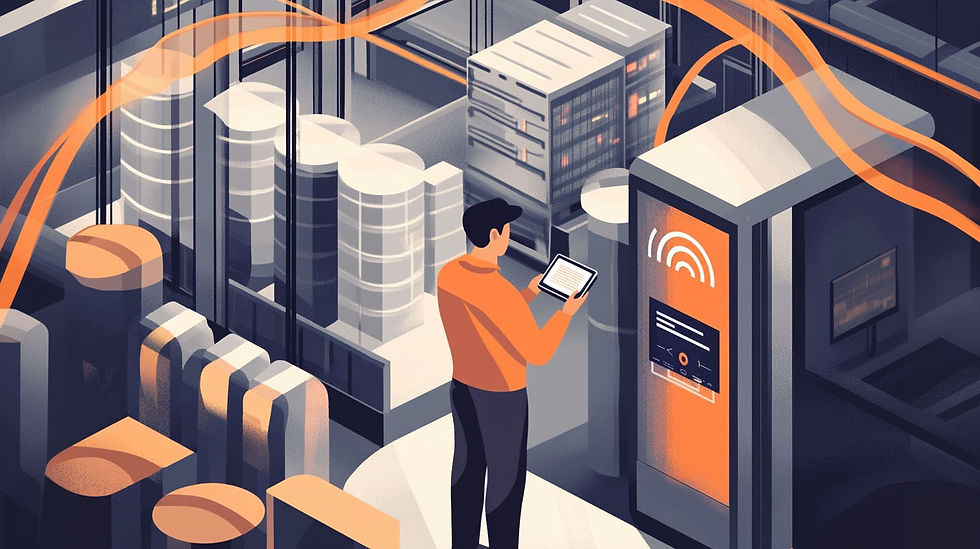Simplify Training: Knowledge Sharing in the Digital Age
- PinPoint
- Apr 2, 2024
- 4 min read

The transfer of knowledge within an organization is more critical than ever. Frontline workers, often the first point of contact between a business and its customers, play a pivotal role in operational success. However, as seasoned professionals retire and a new generation enters the workforce, organizations face the challenge of bridging the knowledge gap. This article explores knowledge sharing in the digital age, specifically mobile-first solutions, in simplifying training and ensuring continuous knowledge sharing and retention.
The Challenge of Knowledge Transfer in Today's Workforce
The generational shift in the workforce poses a significant challenge for organizations: how to capture and transfer the valuable knowledge of experienced workers to newcomers. As these seasoned professionals retire, they take with them years of invaluable insights and experiences—knowledge that, if not captured, is lost forever. This scenario underscores the urgency of finding effective methods to retain this knowledge within the organization.
The Role of Technology in Knowledge Retention and Sharing
Advancements in technology, particularly in mobile and cloud-based solutions, offer a promising avenue for knowledge retention and sharing. Digital platforms enable the creation of a dynamic knowledge library accessible to employees anytime, anywhere. This immediacy and accessibility are crucial for frontline workers who require on-the-spot information to make informed decisions and solve problems.

PinPoint App: Bridging the Knowledge Gap
While many tools facilitate knowledge management, mobile-first tools offer unparalleled ease of use and accessibility, setting them apart in the digital landscape. These solutions empower both workers and managers to not only capture expert knowledge through customizable forms and checklists but also create and upload a variety of media assets, including videos, images, and documents, into a shared knowledge library. This dynamic approach transforms their valuable insights into tangible, interactive resources, broadening the scope of organizational learning. By enabling the creation of personalized content such as checklists and inspections, these platforms encourage widespread participation in knowledge sharing, making them a cornerstone for organizations aiming to enhance their training and knowledge retention strategies.
Capturing and Sharing Expert Knowledge
Capturing the knowledge of experienced workers is a critical step in closing the knowledge gap. Through intuitive interfaces, apps like PinPoint enable frontline workers, managers and admins the ability to create digital assets. These assets encapsulate essential processes, tips, and best practices. This knowledge is then structured into training modules, tasks and on demand resources, making it easily digestible for less experienced workers.

Making Knowledge Accessible at the Point of Need
The true power of a mobile-first strategy lies in its accessibility. Workers equipped with a mobile device can instantly tap into a vast library of organizational knowledge, applying it directly to the task at hand. This on-demand access not only boosts productivity but also enhances learning, embedding new information more deeply through practical application. Furthermore, the PinPoint app elevates this accessibility through its location-aware features. When a worker enters a defined location, PinPoint can automatically deliver relevant knowledge assets through geofences and beacons, effectively "pushing" critical information when and where it's needed most. Conversely, workers also have the flexibility to "pull" information on demand, whether by searching the comprehensive On-Demand library or by scanning QR codes and barcodes to access specific data instantly. This dual capability ensures that knowledge is not just available, but contextually integrated into the workers' environment, maximizing efficiency and reinforcing learning at every opportunity.
Engaging the Workforce with Continuous Learning
Continuous learning is essential in maintaining a workforce that's not only agile and informed but also adaptable to swiftly changing industry dynamics. Today's platforms that facilitate on-the-go learning are particularly effective because they align with modern workers' expectations for flexibility and autonomy in their learning processes. These expectations are largely shaped by the immediacy and accessibility of information on popular platforms like YouTube, where answers to virtually any question are just a few clicks away. Workers now seek similar experiences in their professional development—quick access to information, when and where they need it, without unnecessary complexity.
Furthermore, instilling a culture of continuous improvement positions organizations to stay ahead in competitive markets. By actively supporting ongoing learning opportunities, companies signal their commitment to workforce development and adaptability. This commitment is crucial for staying aligned with not only current industry standards but also future innovations and practices.
Success Stories: Knowledge Sharing in Action
Consider a hypothetical scenario where "TechGlobal Inc.," facing the retirement of key personnel in its engineering department, implements a mobile-first solution to capture and share knowledge. By using a platform like PinPoint, TechGlobal creates a series of videos, interactive guides and checklists based on the expertise of retiring engineers. New hires and existing employees access these resources via their mobile devices, effectively reducing the learning curve and maintaining high operational standards. This approach not only preserves critical knowledge but also fosters a culture of continuous learning and adaptation.
Conclusion
In the face of a rapidly changing workforce, the ability to effectively share and retain knowledge is paramount. Adopting a mobile-first approach to training and knowledge sharing comes with numerous benefits. It promotes higher engagement rates, as information is presented in a familiar, user-friendly format. Additionally, it allows for the rapid dissemination and updating of information, ensuring that the workforce is always equipped with the latest knowledge. While no single tool can solve the challenge of knowledge transfer alone, mobile-first solutions like the PinPoint app offer a powerful means to simplify training, enhance real-time learning, and secure a competitive edge. By embracing technology to bridge the knowledge gap, organizations can ensure their frontline workers are well-equipped to meet the demands of today and tomorrow.



Comments